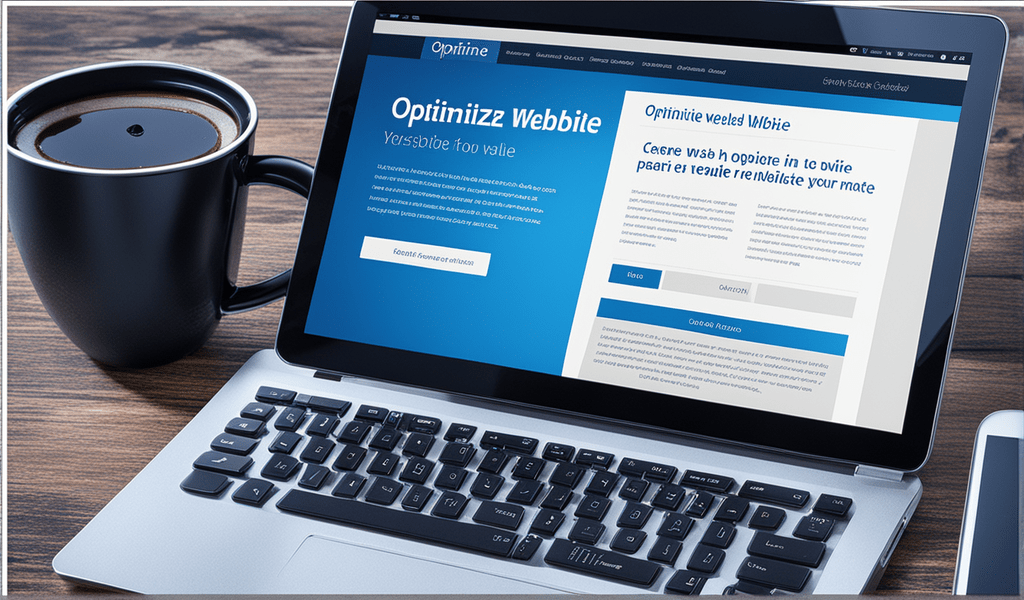
The best SEO for Fashion E-commerce Strutting to the Top of SERPs 2023
Introduction
For fashion e-commerce businesses, Search Engine Optimization (SEO) is essential to stand out in a crowded online marketplace and reach the top of search engine results With fierce competition and ever-changing trends, optimizing for SEO can significantly boost the visibility of your fashion e-commerce website and attract more fashion-conscious customers In this article, we will explore the significance of SEO for fashion e-commerce and effective strategies to strut to the top of search engine results
1 Understand Your Target Audience and Fashion Niche
Understand your target audience’s preferences and interests within the fashion niche Conduct keyword research to identify popular fashion-related search queries

2 Optimize Product s and Descriptions
Optimize your product s and descriptions with relevant keywords Use persuasive language to entice customers and clearly convey the uniqueness of your fashion products
Keyword Research:
- Conduct thorough keyword research to understand what terms your target audience is searching for.
- Integrate relevant keywords naturally into both product titles and descriptions for better search engine visibility.
2. Clear and Concise Titles:
- Craft clear and concise product titles that convey the essence of the item.
- Include essential details such as brand, product name, and key features within the character limit.
3. Prioritize Key Features:
- Highlight key features and benefits in the product description.
- Clearly communicate what sets your product apart from the competition.
4. Understand Your Audience:
- Tailor your product titles and descriptions to resonate with your target audience.
- Use language and tone that aligns with your brand and appeals to the preferences of your customers.
5. Optimal Formatting:
- Format your product descriptions for easy readability.
- Use bullet points, subheadings, and short paragraphs to break up the text and make it visually appealing.
6. Compelling Copywriting:
- Write compelling and persuasive product descriptions that evoke emotions.
- Focus on how the product solves a problem or enhances the buyer’s life.
7. Address Pain Points:
- Identify and address potential concerns or pain points your customers might have.
- Provide solutions or assurances within the product description to build trust.
8. Use High-Quality Images:
- Complement your product descriptions with high-quality images.
- Show different angles, close-ups, and context to give customers a comprehensive view of the product.
9. Include Social Proof:
- Incorporate customer reviews, testimonials, or ratings within your product descriptions.
- Positive feedback builds credibility and influences purchasing decisions.
10. Create Urgency:
- Use language that creates a sense of urgency without being overly aggressive.
- Highlight limited-time offers, exclusive deals, or low stock to encourage immediate action.
11. Provide Detailed Specifications:
- Include detailed specifications and technical information.
- Cater to customers who are specifically looking for certain features or specifications.
12. Mobile Optimization:
- Ensure that your product titles and descriptions are optimized for mobile users.
- Many customers browse and shop on mobile devices, so readability is crucial.
13. A/B Testing:
- Experiment with different variations of product titles and descriptions through A/B testing.
- Analyze which versions perform best and refine your strategy accordingly.
14. Highlight Unique Selling Proposition (USP):
- Clearly articulate your product’s unique selling points.
- Whether it’s quality, innovation, or affordability, make sure customers know what makes your product special.
15. Optimize for SEO:
- Incorporate relevant search terms in your product titles and descriptions.
- Strike a balance between SEO optimization and natural, customer-friendly language.
3 Create High-Quality Visual Content
Create high-quality and visually appealing product images and videos Visual content plays a crucial role in fashion e-commerce and can attract more customers

4 Utilize Long-Tail Keywords
Incorporate long-tail keywords into your product descriptions to target specific search queries and cater to niche fashion interests
5 Implement Rich Snippets and Structured Data
Implement rich snippets and structured data on your product pages to enhance search results and provide additional information about your fashion products
Understanding Rich Snippets and Structured Data:
- Rich snippets are enhanced search results that offer more information beyond the standard text preview.
- Structured data refers to organized information on a webpage, marked up using a standardized format such as Schema.org.
2. Identify Content Suitable for Rich Snippets:
- Determine which types of content on your website are suitable for rich snippets.
- Common candidates include product reviews, recipes, events, articles, and FAQs.
3. Utilize Schema Markup:
- Implement Schema.org markup to provide search engines with structured data about your content.
- Schema.org offers a standardized vocabulary that search engines understand, enhancing the presentation of your content in search results.
4. Choose Appropriate Schema Types:
- Select the appropriate Schema types based on the content you want to mark up.
- For instance, use “Product” for e-commerce products, “Recipe” for culinary content, or “Event” for upcoming events.
5. Enhance Local Business Listings:
- If you have a physical location, use local business markup to provide details like address, phone number, and business hours.
- This helps improve your visibility in local search results.
6. Review and Ratings Markup:
- Implement review and ratings markup for products, services, or articles.
- Displaying star ratings in search results can significantly boost click-through rates.
7. Breadcrumb Markup:
- Include breadcrumb markup to showcase the page’s position in the site hierarchy.
- This enhances the user experience and helps search engines understand the structure of your website.
8. Video and Image Markup:
- Use markup for videos and images to provide additional context and details.
- This can include information such as video duration, upload date, or image descriptions.
9. Event Markup for Schedules:
- If your website includes events or schedules, implement event markup to showcase details like date, time, and venue.
- This is especially beneficial for attracting local audiences.
10. FAQ Page Markup:
- Markup frequently asked questions on your website using FAQPage schema.
- This can lead to the display of rich results that directly answer user queries.
11. Product Markup for E-Commerce:
- If you run an e-commerce site, implement product markup for individual product pages.
- Include details like price, availability, and product reviews.
12. Regularly Update Structured Data:
- Keep your structured data up to date.
- Regularly review and update markup to ensure accuracy and relevance.
13. Test with Rich Results Testing Tool:
- Use Google’s Rich Results Testing Tool to check how your structured data is interpreted by search engines.
- Address any errors or warnings to enhance the effectiveness of your markup.
14. Monitor Performance Analytics:
- Track the performance of your rich snippets using analytics tools.
- Evaluate click-through rates and user engagement to refine your strategy.
15. Stay Informed about Updates:
- Keep abreast of updates and changes to search engine algorithms and structured data guidelines.
- Adapt your approach to align with evolving best practices.
6 Optimize Website for Mobile Devices
Ensure that your fashion e-commerce website is fully optimized for mobile devices Mobile-friendliness is essential for both user experience and SEO rankings

7 Offer Personalization and Recommendations
Utilize customer data to offer personalized product recommendations and suggestions Personalization can improve customer engagement and increase sales
Collect User Data Responsibly:
- Obtain user consent and prioritize data privacy.
- Collect relevant data, such as browsing behavior, purchase history, and preferences, to inform personalization efforts.
2. Create User Profiles:
- Develop user profiles based on collected data.
- Include information such as demographics, interests, and past interactions to build a comprehensive understanding of each user.
3. Dynamic Content Personalization:
- Implement dynamic content personalization on your website or app.
- Tailor homepage content, product recommendations, and promotions based on individual user profiles.
4. Behavioral Targeting:
- Utilize behavioral targeting to analyze user actions in real-time.
- Adjust content, recommendations, or calls-to-action based on a user’s current session or recent interactions.
5. Segmentation Strategies:
- Divide your audience into segments based on shared characteristics.
- Personalize content for each segment to ensure relevance to specific groups of users.
6. Personalized Email Campaigns:
- Implement personalized email marketing campaigns.
- Use customer names, recommend products based on past purchases, and tailor content to individual preferences.
7. Recommendation Engines:
- Integrate recommendation engines to automate personalized suggestions.
- Leverage algorithms to analyze user behavior and offer products, content, or services that align with their interests.
8. Contextual Personalization:
- Implement contextual personalization based on user context.
- Consider factors such as location, device type, and time of day to deliver highly relevant content.
9. Interactive Content:
- Create interactive content that adapts based on user engagement.
- Quizzes, surveys, and interactive tools can provide insights into preferences and guide personalized recommendations.
10. Cross-Sell and Upsell Strategies:
- Implement cross-selling and upselling strategies.
- Recommend complementary products or upgrades based on a user’s current selections or purchase history.
11. Preference Centers:
- Allow users to define their preferences through preference centers.
- Enable them to customize their experience by indicating their interests, communication preferences, and more.
12. Personalization in Mobile Apps:
- Extend personalization efforts to mobile apps.
- Leverage mobile-specific data, such as location services, to enhance the user experience on handheld devices.
13. Feedback Loops:
- Encourage users to provide feedback on personalized recommendations.
- Use this feedback to continuously refine and improve your personalization algorithms.
14. Seasonal and Trend-Based Recommendations:
- Incorporate seasonal and trend-based recommendations.
- Adjust your personalization strategy to align with changing seasons, holidays, or emerging trends.
15. A/B Testing for Personalization:
- Conduct A/B testing to evaluate the effectiveness of personalized experiences.
- Analyze user response and adjust personalization strategies based on performance metrics.
8 Leverage Social Media for Fashion Promotion
Leverage social media platforms to promote your fashion products and interact with potential customers Social media exposure can lead to increased website traffic
Define Your Brand’s Unique Voice:
- Establish a distinct and consistent brand voice that resonates with your target audience.
- Align your tone, style, and messaging with the identity you want to convey.
2. Choose the Right Platforms:
- Identify the social media platforms that align with your brand and audience.
- Instagram, Pinterest, TikTok, and Facebook are popular choices for fashion promotion.
3. Visual Storytelling with Instagram:
- Use Instagram to tell a visually compelling story about your brand.
- Share high-quality images, behind-the-scenes content, and user-generated content to create a cohesive narrative.
4. Engage with Influencers:
- Collaborate with fashion influencers and bloggers in your niche.
- Influencers can amplify your reach and bring authenticity to your brand through their followers.
5. Video Content on TikTok:
- Embrace the dynamic and creative nature of TikTok for short-form video content.
- Showcase fashion trends, styling tips, and behind-the-scenes glimpses to capture a younger audience.
6. Create Pinterest Boards:
- Utilize Pinterest to curate boards that reflect your brand’s aesthetic.
- Pin not only your products but also fashion inspiration, mood boards, and style guides.
7. Interactive Content on Facebook:
- Use Facebook for engaging and interactive content.
- Host live fashion shows, Q&A sessions, or polls to foster community interaction.
8. Utilize Shoppable Posts:
- Take advantage of shoppable features on platforms like Instagram and Facebook.
- Enable users to seamlessly shop for your products directly through social media.
9. Hashtag Campaigns:
- Launch hashtag campaigns to encourage user-generated content.
- Create branded hashtags and incentivize followers to share their fashion moments using your products.
10. Engage in Trend Conversations:
- Stay abreast of fashion trends and participate in relevant conversations.
- Use trending hashtags and participate in challenges to boost visibility.
11. Instagram Stories for Timely Updates:
- Leverage Instagram Stories for real-time updates, flash sales, and limited-time promotions.
- Utilize features like polls, quizzes, and countdowns to drive engagement.
12. Behind-the-Scenes Content:
- Offer a glimpse behind the scenes of your fashion brand.
- Share the creative process, photoshoots, and the personalities behind your brand.
13. User-Generated Content (UGC) Campaigns:
- Encourage customers to share their photos wearing your products.
- Feature UGC on your social media platforms to build a sense of community and authenticity.
14. Collaborate with Fashion Communities:
- Join and engage with fashion-centric groups and communities on platforms like Facebook.
- Contribute valuable content and establish your brand as an authoritative voice.
15. Analytics and Iteration:
- Regularly analyze social media analytics to understand what resonates with your audience.
- Use insights to refine your strategy and adapt to changing trends.
9 Encourage Customer Reviews and Testimonials
Encourage satisfied customers to leave reviews and testimonials on your fashion products Positive reviews can build trust and influence potential customers
Deliver Outstanding Customer Experiences:
- Start by ensuring that your products or services consistently exceed customer expectations.
- Exceptional experiences naturally prompt customers to share their positive feedback.
2. Request Reviews at the Right Time:
- Identify key touchpoints in the customer journey to request reviews.
- Timing is crucial – ask for feedback after successful transactions, positive interactions, or when customers express satisfaction.
3. Optimize the Review Request Process:
- Streamline the review request process to make it easy for customers to share their feedback.
- Include direct links or buttons in emails, on your website, or within your app for convenient access.
4. Incentivize Reviews Responsibly:
- Consider offering small incentives, discounts, or loyalty points for customers who leave reviews.
- Ensure compliance with guidelines and maintain transparency about any incentives provided.
5. Utilize Email Marketing:
- Leverage your email marketing campaigns to request reviews.
- Craft compelling and personalized emails that encourage customers to share their experiences.
6. Create Review Request Templates:
- Develop standardized review request templates that can be easily customized.
- Personalize messages based on the customer’s interaction history with your brand.
7. Encourage Specific Feedback:
- Guide customers to provide specific feedback by asking targeted questions.
- Inquire about particular aspects of their experience, such as customer service, product quality, or the ease of the purchasing process.
8. Social Media Engagement:
- Actively engage with customers on social media and encourage them to share their experiences.
- Respond promptly to comments and express gratitude for positive mentions.
9. Highlight the Impact of Reviews:
- Communicate to customers how their reviews contribute to your business.
- Emphasize the positive impact their feedback has on helping others make informed decisions.
10. Display Reviews Strategically:
- Showcase customer reviews prominently on your website and product pages.
- Use dedicated sections to display testimonials, and consider incorporating review widgets or plugins.
11. Create a Review Collection Campaign:
- Launch targeted review collection campaigns, especially after successful transactions or positive interactions.
- Use multi-channel approaches, including email, social media, and in-app prompts.
12. Feature Customer Stories:
- Encourage customers to share their stories and experiences in the form of case studies or testimonials.
- Highlight these stories on your website or in marketing materials for a more in-depth narrative.
13. Express Appreciation for Feedback:
- Show genuine appreciation for customers who take the time to leave reviews.
- Consider sending thank-you emails or acknowledging positive reviews publicly.
14. Monitor and Respond to Reviews:
- Regularly monitor customer reviews across platforms.
- Respond promptly and professionally to both positive and negative reviews, demonstrating your commitment to customer satisfaction.
15. Implement a Loyalty Program:
- Tie customer reviews to a loyalty program that rewards consistent engagement.
- Encourage customers to become long-term advocates for your brand.
10 Monitor Performance and Adapt
Regularly monitor your fashion e-commerce website’s SEO performance through analytics tools Analyze website traffic, conversion rates, and keyword rankings to refine your SEO strategies and reach the top of SERPs

Conclusion
Mastering SEO is essential for food trucks to boost search visibility, engage customers, and thrive in the mobile dining scene. Identify your audience, optimize with keywords, and create compelling content. Use long-tail keywords, implement local SEO, and leverage social media. Collaborate with influencers, share video experiences, and showcase customer testimonials. Monitor and adapt your SEO for ongoing success. Elevate your online presence, attract foodies, and become a sought-after destination.
Visit:https://csspmstimes.com/